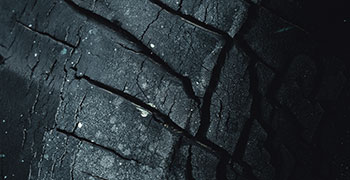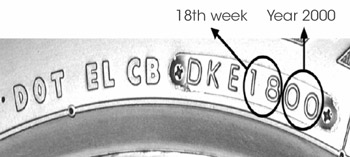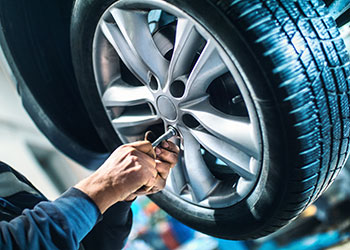-
General Tyres
-
OTR Tyres
-
Batteries
Need a new battery?Our stores stock a wide range of batteries for all vehicle types. - Stores
-
Corporate
Commitment to qualityBridgestone Tyres Papua New Guinea is the tyre industry market leader, renowned for producing quality products and being at the forefront of technology, innovation and continuous improvement.
Tyres for all
vehicle types
How to tell the age of a tyre
- General Tyres
- / How to tell the age of a tyre
How to tell the age of a tyre
Old tyres can be a ticking time-bomb that could dangerously fail and lose air. If you haven’t done so recently, it could be time to check how old the tyres on your vehicle are and if they need replacing. Bridgestone explains how.
What happens to tyres as they age?
Tyres are made of various types of textile, steel and rubber compounds that have properties that evolve over time. As the rubber in a tyre gets older and is exposed to the elements, the strength of the bond between the rubber and the steel belts is reduced. When an old tyre is put under load, cracks in the rubber will begin to form.
These cracks may appear on the tyre’s surface, but they can also appear out of sight within the structure of the tyre. Eventually, the cracking can even cause the steel belts in the tread to separate from the rest of the tyre. Driving on such a tyre is a serious safety risk.

How can I tell the age of a tyre?
Telling the age of a tyre that has not been retreaded is fairly straightforward. On the sidewall of a tyre you will be able to find a 10 to 12 digit serial tyre identification number, which is usually preceded by the acronym “DOT”, for example: DOT ELCB DKE 1800.

If the tyre was manufactured after the year 2000, then you can determine its age by looking at the last four digits of this number. These represent the week the tyre was made, followed by the year. In the case of the serial number used above, the “18” would indicate the 18th week, and the “00” would indicate 2000. So, the tyre was manufactured in the 18th week of 2000.
If the tyre was manufactured before the year 2000, things get a little more complex. For these tyres, age is indicated by the last three digits. Take for example the serial number DOT XYZ WT1 188. In this serial number, the 18 indicates the week the tyre was manufactured, while the 8 indicates the year of the decade. So, in this case, the tyre was made on the 18th week of the 8th year of the decade.
There is no universal way of knowing which decade a tyre was made. During the 1990s, tyres were marked with a triangle pointing to the last digit of the serial number in order to distinguish them from previous decades. We strongly recommend against driving with tyres of this age.
How old should my tyres be?
At Bridgestone, we recommend that in addition to your own personal regular inspections, you have all your tyres, including spares, inspected regularly by a qualified expert at least once a year once they reach five years of age. Specialists, such as tyre dealers, will let you know whether or not your tyres are safe to continue using. Tyres should be removed once they reach ten years of age, regardless of appearance, mileage or actual wear.
If the tyres were original equipment on the vehicle, follow the vehicle manufacturer’s tyre replacement recommendations, when specified (but not to exceed 10 years). As well as this, we strongly encourage you to be aware not only of your tyres' visual condition and inflation pressure but also of any change in dynamic performance such as increased air loss, noise or vibration.


Along with the manufacturer's name and the name of the tyre (e.g. Bridgestone Ecopia), there's always a set of numbers and letters that relate to the size of the tyre.
Here's a rundown on what those numbers mean:
205 is the section width of the tyre in millimetres.
60 is the aspect ratio or tyre profile.
R means it is radial construction.
15 is the diameter of the wheel rim in inches.
We use cookies to ensure you get the best experience. View privacy policy.


